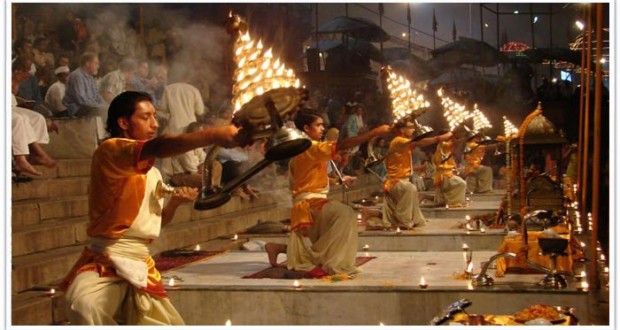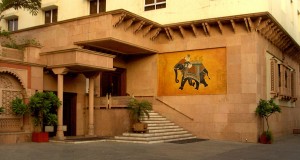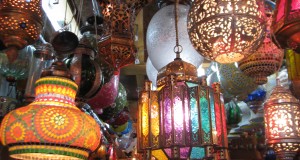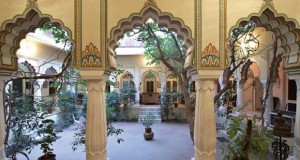Review Overview
2
Summary : On a particularly auspicious day, as many as 30 000 pilgrims may show up at Dasashwamedh Ghat to greet the dawn.
River Ganges-The Ghats-Nepalese Templevishvanath Temple (Golden Temple)-Gyanvapi Mosque-Durga Temple-tulsi Temple-Benares Hindu University-Bharat Kala Bhawan The essential Varanasi can be found on the river-front at dawn—when Hindu pilgrims flock to the ghats (stepped embankments) on the bank of the Ganges to perform their ablutions, do their gymnastic exercises, have a ritual bath in the river, nd perform puja to the rising sun, all rituals evolved and derived from thousands I years of worship and tradition. A rich and fascinating sight.
Book a morning tour from hotel or tourist office, and arrange to be woken at least n hour before dawn in order to take a rickshaw from anywhere in the new town town to the tour boat. It usually leaves from the central Dasashwamedh Ghat, which offers a splendid view of the river-front. This is the ghat of the 10 (das) horse (aswa) Jacrifice (mach), performed by Brahma, which paved the way for Shiva’s return to Varanasi after a brief spell of banishment by the then ruler. If not taking an organised kmr, boats can be hired for between Rs25 and Rs75 per 2-hour trip from many of the ghats.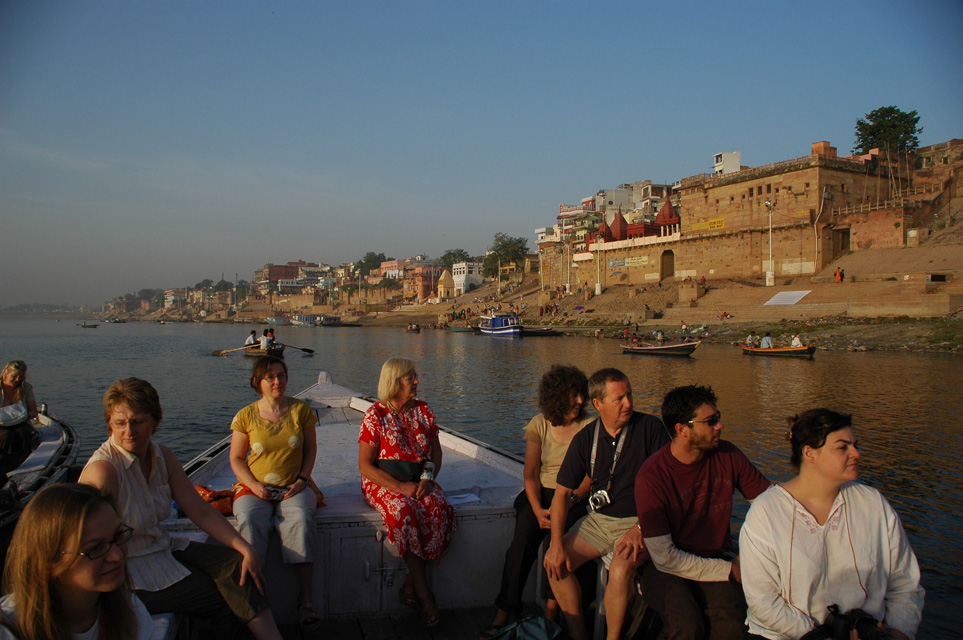
From the ghat steps, watch the huge red orb of the sun creep over the horizon and cast its rosy warm glow over the holy Ganges (a uniquely memorable sight), then board your boat and work silently up the river. With the coming of dawn, the lonely mist-grey ghats suddenly burst into lively, colourful activity. The faithful flock down to the riverside, and the Venice-like vista of ruined temples (many sliding into the sea) and bathing ghats is filled with priests invoking the dawn, young men practising yoga exercises, people washing clothes or having the ritual morning bath, and pyres being lit for the first cremations of the day. On a particularly auspicious day, as many as 30 000 pilgrims may show up at Dasashwamedh Ghat to greet the dawn.
Whether you take an organised boat-trip or hire a private boat is up to you. There are always young lads patrolling the river, offering to show tourists the ghats as part of a private boat excursion (2 hours). Going solo certainly has its advantages: tour boats attract a lot of unwelcome attention from ‘fake’ Sadhus (holy men) wanting money, or from insistent trinket salesmen. Yet the conducted tour gives good inforrmation, and guides you round the principal old city temples off the river. Perhaps best, therefore, to use this for orientation and to take a private boat-trip at leis re later on.
Tour boats take you up-river first, proceeding south from Dasashwamedh G at (with its shrine to Sitala, goddess of smallpox) to Kedar Chat (fine lingams and temple), Harischandra Chat (secondary burning ghat, bodies cremated by chandal outcastes), Dandi Chat (used by ascetics), the popular Hanuman Chat (used ay worshippers of the monkey god), Shivala (Kali) Chat (owned by the Maharajah, has a famous lingam), Tulsi Chat (dedicated to the poet Gosain Tulsi Das; now sliding into the river), and Asi Chat, the furthest ghat upstream and one of the holies . It marks the confluence of the Asi and Ganges waters, and is the first of the five special ghats pilgrims must bathe in (during a single day) to fulfil the purification ritual. The other four are Dasashwamedh, Barnasangam, Panchganga and Manikarnika.
From Asi Ghat, you’ll return back downstream to Dasashwamedh to see the northern ghats. First, next to Dasashwamedh, is Jai Singh’s 1710 observatory build within Mansingh’s old palace (1600) at Man Mandir Ghat. The observatory is one of three surviving (see Jaipur, p.154). Much of the palace was restored in the 19th century and the fine north-corner stone balcony is original. Then Lalita Chat, below the Nepalese Temple and (further back) the Vishvanath Temple. At the adjoining Jalsain and Manikarnika Chats (main burning ghats), photography is strictly f rbidden. Jalsain is named after Vishnu’s incarnation as Jalsai, sleeper on the oceans. Manikarnika is most sacred because Shiva dug a tank here, filling it with sweat as he tried to recover an earring Parvati had dropped in it. Between the tank and ghat is the Chandrapaduka and a slab of stone with Vishnu’s footprints. Further on is Dattatreya Chat (with the footprints of a Brahmin saint, in a small temple), the hu ;e Scindia Chat, the Ram Chat built by the Rajah of Jaipur, and above this Aurangzeb ‘s small Alamgir Mosque, which incorporates earlier Buddhist columns. Further north, Cai Chat is marked by its stone figure of a cow, and Trilochan Chat by its two turrets (between which pilgrims bathe in the extra-holy water). These last two ghats are alto where most of the vultures hang out, waiting for lunch to float by. From here, enjoys close-up views of the stately new Malviya Bridge, then return to Dasashwamedh Ghat.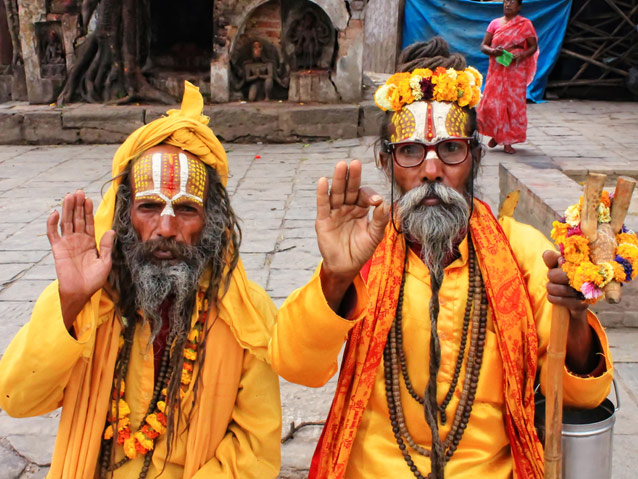
Off the boat, it’s up the steps and to the right for the marvellous little Nepalee Temple, recently renovated and full of exotic wood carvings depicting Shiva, Parva i, Hanuman and various other deities. Diving into the tunnel backstreets of the old city, you emerge presently at Varanasi’s famous Vishvanath (Golden) Temple. You can’t go in but if you climb the stairs of the old house opposite, you can get reasonable views from the balcony. The solid-gold plating of the temple towers was donated by Maharajah Ranjit Singh of Lahore in 1835. Dedicated to Shiva as Vishvanath, Lord of the Universe, the present temple was erected by Rani Ahalyabai Holkar of Indorse in 1776. Adjacent to it is the site of the original temple, built in 1600, which Aurangzeb destroyed to make way for his Gyanvapi Mosque in the 17th century. The foundations and rear of this mosque still display rare examples of temple design and the columns in front also came from the earlier building. The two minarets rise 71 m (233 ft) above the river and dominate the skyline of this part of the city when seen from the river. The Cyan Vapi (Covered Well) to the side of the mosque is a favourit e resting place of pilgrims.
though the tour continues on to Benares University, you may well decide to in the old city. There’s good shopping at the innumerable tiny shops and stalls roLund the Golden Temple (buy anything from attractive silk and sarees to old coins and curios, elegant glass bangles to novelty fly whisks and toy-boats ng away in washing-up bowls). Then take a short walk south to the crimson stained Durga Temple, commonly known as the Monkey Temple to its resident population of mischievous monkeys. Built in the North Nagara style by an 18th-century Bengali Maharani, it is dedicated to i s manifestation as the ‘terrible’ Durga, and goat sacrifices are common. Entrance to the temple is prohibited, but you can look down on it (quite enough for the queasy) from the walkway above. Next door is the modern Tulsi Manas temp le, built in 1964 to commemorate the place where the poet-saint Tulsidas lived , The marble walls of this shikhara-style temple are inscribed with the entire southe the epic Ramacharitamanas (expounding the history and deeds of Rama, Vishnu’s incarnations), composed by the poet. A further 20 minutes’ walk down Asi Rd (or a short rickshaw ride) brings you to Benares Hindu ,U somnei 1v1 ekmr s(7i mtyiles) from the city centre. This turn-of-the-century rsity is a vast complex 5 sq km (2 sq miles in area) featuring one of India’s t museums, the Bharat Kala Bhawan. This houses a superb collection of mIinniatureds, scuilptaures nand teracotas. Open 1 am to 4 pm July-April and am to 12.30 pm in May and June, daily (except Sunday).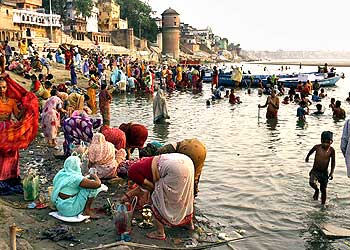
After a rest, use the afternoon for a return visit to the old city. If you get lost wondering through the bazaars, shops and stalls, and can’t find your way back to ;hats, hire a guide; follow a sacred cow or just ask for directions. There are over ghats to explore, so no fear of getting bored. But be careful around the Manikar- ‘burning’ ghat; the cremation pyres can unsettle some people. People are understandably sensitive about the ghats and visitors have had their cameras destroyed for trying to take photographs. Every local who sidles up to you in this Area—usually pretending to be a guide to holy Hindu rituals—is likely to be a silk emporium tout. But the funeral ceremonies themselves are fascinating—here in varanasi , more than anywhere else in India, life and death are on constant public view .
If you still have time (and energy) to spare, finish the day off with a rickshaw ride t to Bharat Mata Temple 1.5 km (1 mile) south of Cantonment station where, unstead of the usual images of gods and goddesses, there is a relief map of ‘Mother india ‘ engraved in marble. This temple was inaugurated by Mahatma Gandhi.

